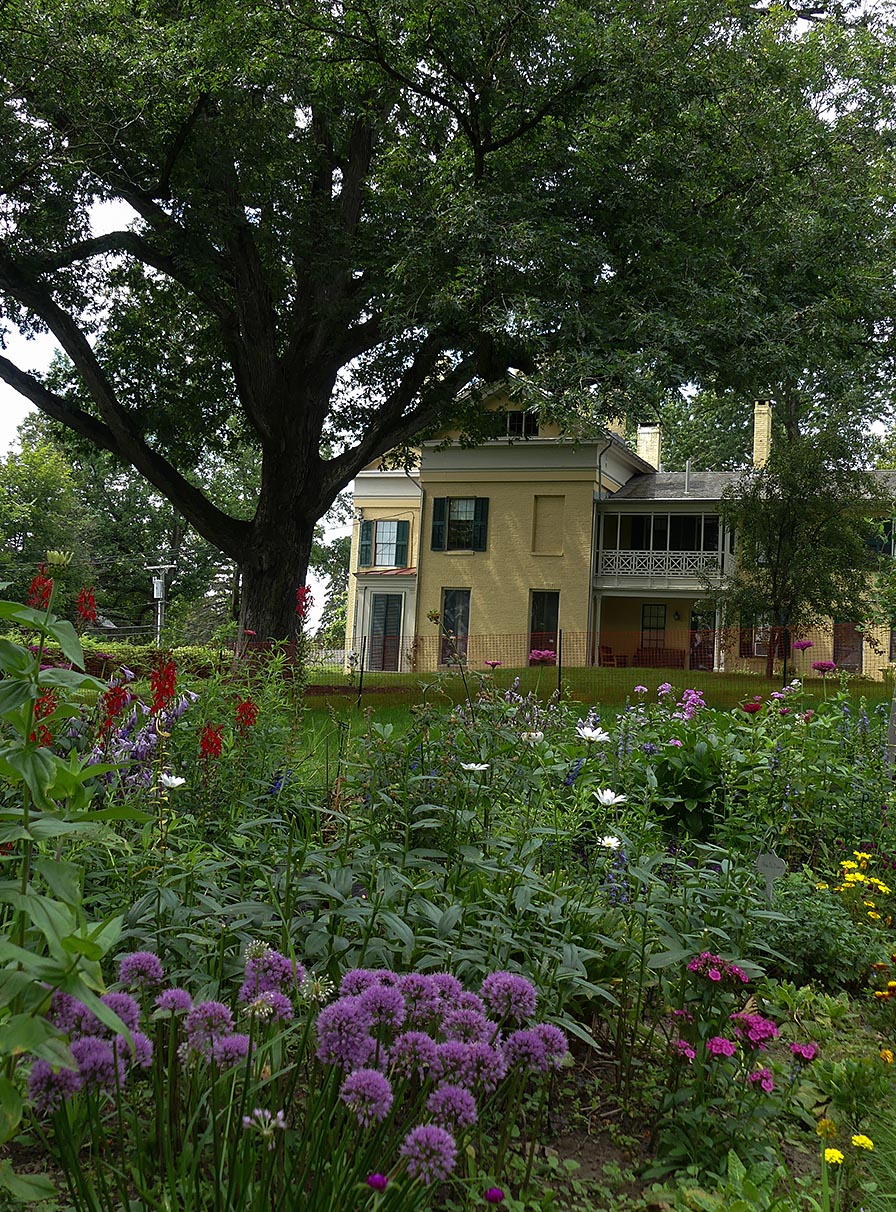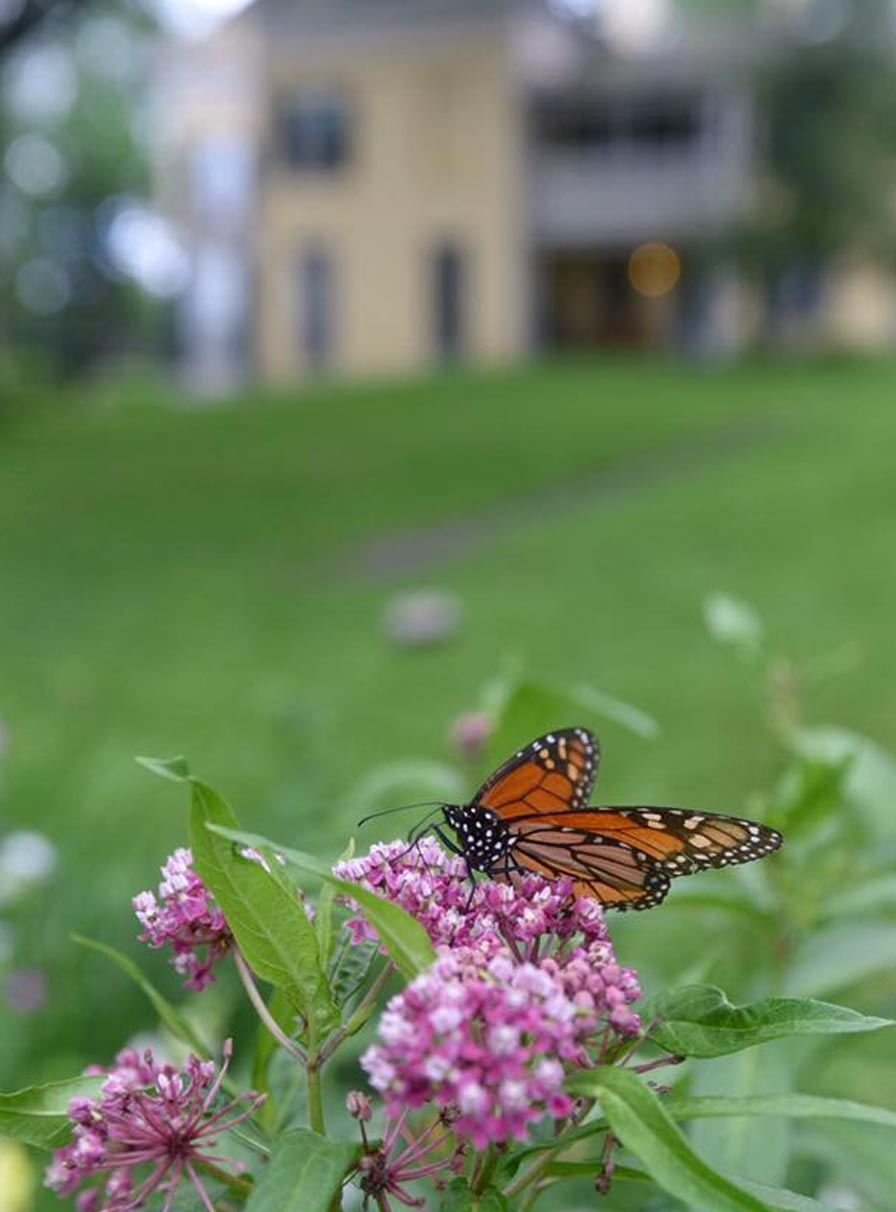Flower Garden
In the Homestead garden, Emily, Lavinia and Mrs. Dickinson grew a great variety of flowering plants: shrubs, climbing vines, annuals, perennials, and bulbs. Dickinson’s poems and letters mention roses, lilacs, peonies, sweet williams, daisies, foxgloves, poppies, nasturtiums and zinnias, among many others. Although the exact location of the flower beds is unknown, Dickinson’s niece Martha remembered that “there were long beds filling the main garden, where one walked between a succession of daffodils, crocuses and hyacinths in spring—through the mid-summer richness—up to the hardy chrysanthemums that smelled of Thanksgiving, savory and chill, when only the marigolds . . . were left to rival them in pungency.”
Martha Dickinson Bianchi, “Emily Dickinson’s Garden,” Emily Dickinson International Society Bulletin, 2, No. 2 (Nov/Dec 1990), 1–2, 4.

As a gardener, Emily Dickinson was attuned to the weather, the changing seasons, transitions in times of day, and the populations of birds, butterflies, bees, and other insects that dwelled among her plants. Her observations of these creatures made their way into countless poems.
